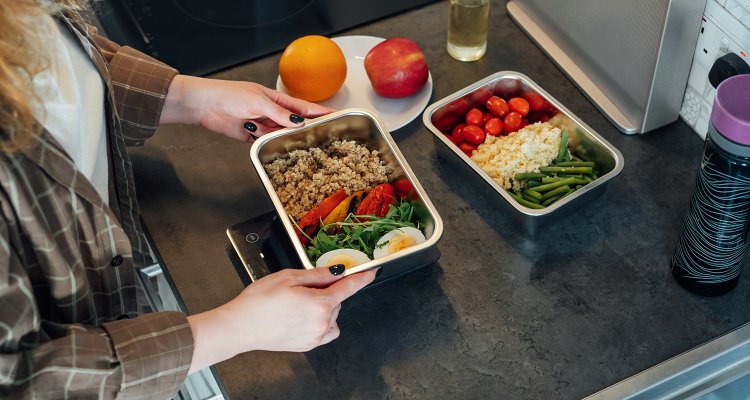
Blog
Stickers and kitchen tools help reduce food waste
Although it is some time ago, I still remember a few food prep surprises from when I first started living by myself in a student house. Suddenly there was a weighing scale in the kitchen, while I was used to measuring cups. People apparently put a bit of salt in the water when they cook potatoes. Who knew? My mum was pretty much cooking salt-free. There were debates with fellow students about whether tomatoes should be stored in or outside of the fridge.
What it boils down to, is that we all have habits and routines when it comes to handling food. Not only can these be hard to break, often we do not even realize that there is another way of handling food, let alone that we ask ourselves if this could be a better way. Would small prompts with information and kitchen tools help us manage our food better and waste less? That is the question that we set out to answer.
We partnered with the Netherlands Nutrition Centre – who have developed an extensive set of such prompts and tools. In two studies, we filled numerous boxes with a notepad for making shopping lists, a refrigerator sticker with information on which fruits and veggies should be stored in the fridge (and which not), a freezer sticker with information on how long foods can be kept in the freezer, a leaflet with information on how to organize the fridge optimally, a measuring cup for pasta and rice with portion size indication, a leaflet with information on expiration dates, recipe cards, and (in our second study) a fridge thermometer. In short, all sorts of prompts and tools that should help families as they shop, store, prepare, and consume their food. These boxes where sent to families that had agreed to participate in our study.
The participating families reported how much food they wasted during a week, both before and after they received the box with tools. They also answered questions about their food management skills and their waste-related behaviours. In our first study, part of the participating households also received e-mails with information to motivate them in reducing food waste, using social norms.
Our attempt was successful: food waste went down by a whopping 39.2% and 23.0% in the two studies. Participating families also reported better skills in managing their food after they received the boxes, and they performed more waste-reducing behaviours (such as making shopping lists, checking inventory before shopping, measuring portion sizes, eating leftovers, etc). Effects on these behaviours were even stronger in those families that received motivational e-mails. In short, providing consumers with information, prompts, and kitchen tools can help them manage their food in a better way and drive down food waste.